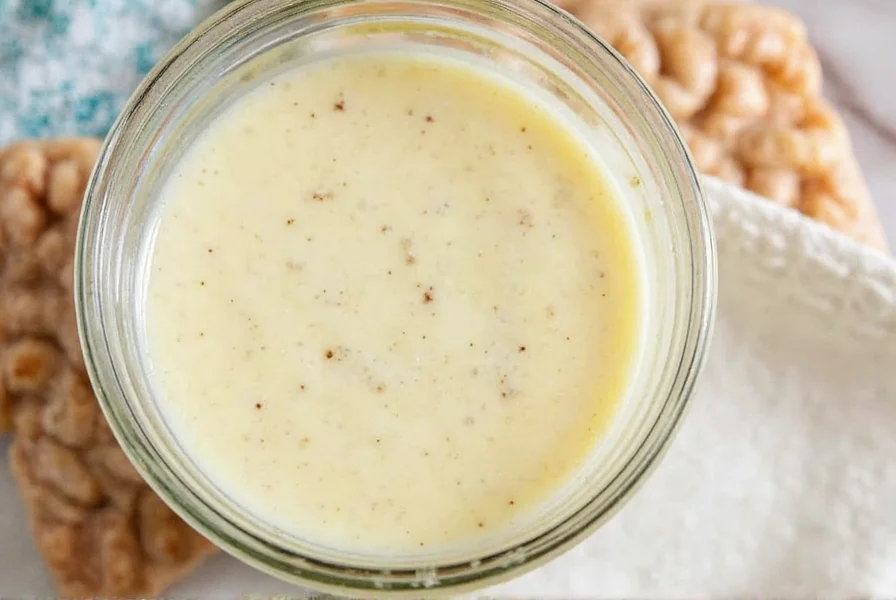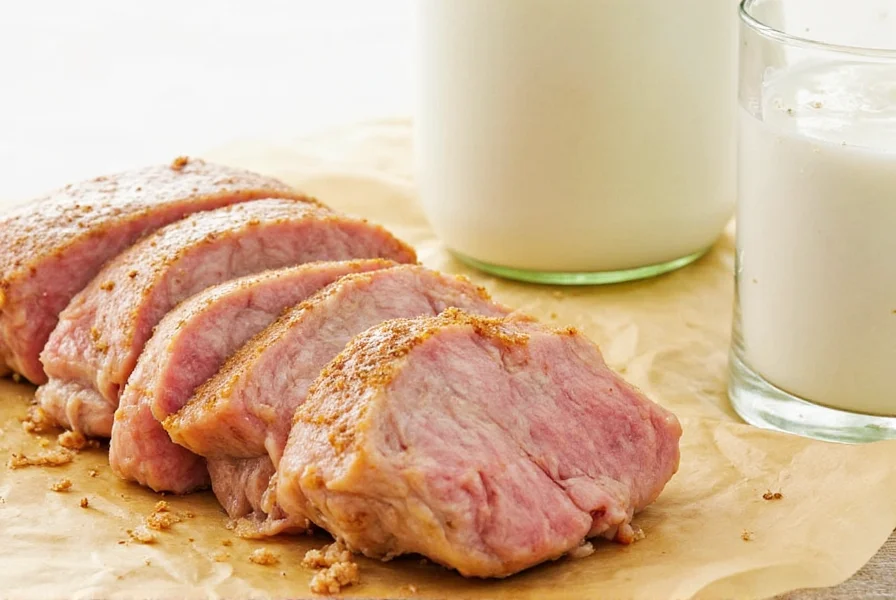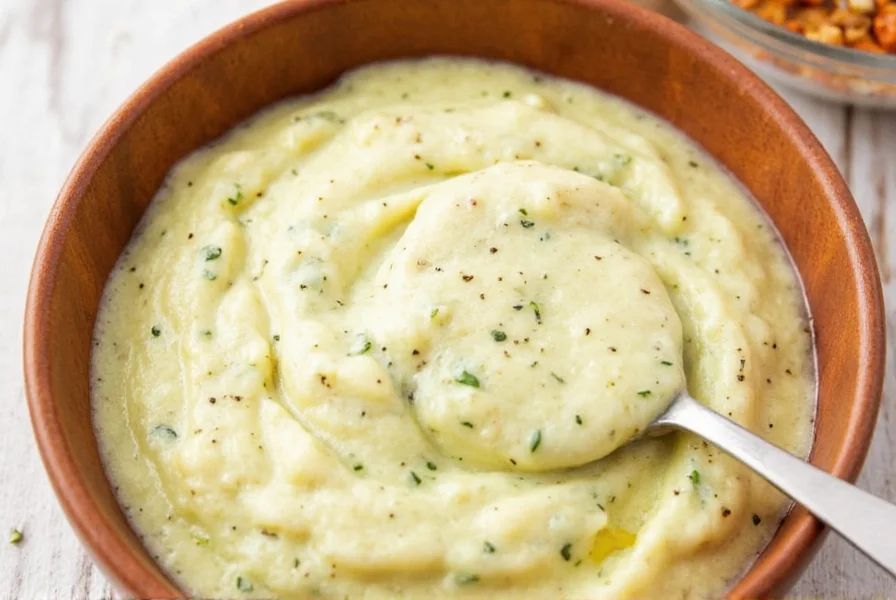When crafting the perfect buttermilk marinade, you're tapping into a time-tested technique that transforms ordinary chicken into exceptionally tender, flavorful dishes. This versatile dairy product works magic on proteins through a scientific process that's both simple and effective.
The Science Behind Buttermilk Marinades
Buttermilk's effectiveness as a marinade stems from its unique composition. Unlike regular milk, cultured buttermilk contains active lactic acid bacteria that produce both lactic acid and enzymes during fermentation. These components work synergistically to break down tough protein structures in meat through a process called denaturation.
The lactic acid gently tenderizes the meat fibers without the harshness of vinegar or citrus-based marinades, which can sometimes turn meat mushy if left too long. Meanwhile, the protease enzymes in buttermilk specifically target and break down collagen and muscle fibers, resulting in remarkably tender meat that retains its structure.
| Marinade Component | Function | Optimal Time |
|---|---|---|
| Lactic Acid | Tenderizes surface proteins | 2-24 hours |
| Protease Enzymes | Breaks down connective tissues | 4-12 hours |
| Calcium | Activates natural meat enzymes | 2-8 hours |
| Fat Content | Carries fat-soluble flavors | 2-24 hours |
Benefits of Buttermilk Marinades Compared to Alternatives
When comparing buttermilk to other common marinade bases, several advantages become apparent. The mild acidity (pH around 4.4-4.6) provides tenderizing power without the risk of "cooking" the meat's surface like stronger acids might. This makes buttermilk marinades particularly forgiving regarding marinating time.
Unlike yogurt-based marinades which can sometimes leave a thicker coating, buttermilk's thinner consistency allows for more even penetration. The natural sugars in buttermilk also promote beautiful browning when cooking, creating that desirable golden crust on fried chicken or roasted poultry.
Creating the Perfect Buttermilk Marinade
A basic buttermilk marinade requires just a few key ingredients, but understanding the ratios and additions can elevate your results significantly. The foundation consists of:
- 2 cups cultured buttermilk (not baking buttermilk)
- 1-2 tablespoons salt (adjust to taste)
- 1 teaspoon black pepper
For enhanced flavor profiles, consider these additions based on your desired cuisine:
- Southern-style buttermilk marinade: Add 1 tablespoon paprika, 1 teaspoon garlic powder, 1 teaspoon onion powder, and 1/2 teaspoon cayenne
- Herb-infused version: Mix in 2 tablespoons fresh herbs (thyme, rosemary, or dill)
- Spicy variation: Include 1-2 tablespoons hot sauce or 1 teaspoon cayenne pepper
- Sweet & tangy option: Add 1 tablespoon honey or maple syrup
Step-by-Step Marinating Process
Follow these steps for optimal results when preparing your buttermilk-marinated chicken:
- Place chicken pieces in a large resealable plastic bag or non-reactive container
- Pour buttermilk mixture over chicken, ensuring all pieces are fully submerged
- Remove excess air from bag and seal tightly, or cover container
- Refrigerate for appropriate time (see timing guidelines below)
- When ready to cook, remove chicken from marinade
- Gently pat dry with paper towels (critical for crispy skin)
- Proceed with your chosen cooking method
Optimal Marinating Times for Different Cuts
Understanding how long to marinate chicken in buttermilk is crucial for perfect results. Different cuts require different times:
- Boneless, skinless breasts: 2-4 hours (longer can make texture too soft)
- Bone-in, skin-on breasts: 4-8 hours
- Thighs and drumsticks: 8-12 hours
- Whole chicken: 12-24 hours
Never exceed 24 hours for any cut, as the prolonged exposure to acid can begin to break down the meat's structure too much, resulting in a mushy texture. Always marinate in the refrigerator, never at room temperature.
Common Mistakes to Avoid
Even with a simple technique like buttermilk marinating, several pitfalls can compromise your results:
- Using baking buttermilk instead of cultured: Baking buttermilk lacks the active cultures needed for tenderizing
- Skipping the drying step: Failing to pat the chicken dry before cooking prevents proper browning
- Over-marinating: Exceeding recommended times can make meat mushy
- Reusing marinade: Never reuse marinade that's contacted raw meat without boiling first
- Not seasoning adequately: Buttermilk requires more salt than other marinades
Serving Suggestions for Buttermilk-Marinated Chicken
Buttermilk-marinated chicken pairs beautifully with various sides and sauces. For traditional southern fried chicken, serve with coleslaw, biscuits, and pickles. When roasted, it complements roasted vegetables, mashed potatoes, or cornbread.
For a healthier preparation, try baking or air-frying your buttermilk-marinated chicken. The marinade works equally well for these methods, producing juicy results with less oil. Leftover marinated chicken makes excellent additions to salads, sandwiches, or wraps the next day.

Buttermilk Marinade Variations for Different Proteins
While buttermilk works exceptionally well with chicken, it also enhances other proteins when adjusted properly:
- Pork: Works well with pork chops or tenderloin (marinate 4-8 hours)
- Veal: Excellent for veal cutlets (marinate 2-4 hours)
- Fish: Use a diluted version (1:1 buttermilk:water) for delicate fish (marinate 30-60 minutes)
Remember that more delicate proteins require shorter marinating times and sometimes dilution of the buttermilk to prevent over-tenderizing.

Frequently Asked Questions
Can I use buttermilk powder to make a marinade?
Yes, but you'll need to reconstitute it properly. Mix 1 cup water with 3 tablespoons buttermilk powder, then let it sit for 5-10 minutes to activate. The results won't be quite as effective as cultured buttermilk since it lacks live cultures, but it will still provide tenderizing benefits from the lactic acid.
Why does my buttermilk marinade separate?
Separation is normal and indicates you're using real cultured buttermilk. Simply whisk or shake the marinade before using. This separation happens because buttermilk is a cultured product where the milk proteins have begun to coagulate. The separated liquid (whey) contains valuable enzymes and acids, so don't discard it.
Can I substitute regular milk for buttermilk in marinades?
You can create a substitute by adding 1 tablespoon vinegar or lemon juice to 1 cup regular milk and letting it sit for 5-10 minutes. However, this won't provide the same tenderizing enzymes as real cultured buttermilk, so results won't be identical. The substitute works in a pinch but lacks the complex flavor and full tenderizing power of genuine buttermilk.
Does buttermilk marinade work for grilling?
Absolutely. Buttermilk marinade works exceptionally well for grilled chicken. The lactic acid helps prevent the meat from drying out on the grill while promoting beautiful grill marks. Just remember to pat the chicken very dry before placing it on the grill to ensure proper searing and prevent sticking.
How can I make a dairy-free buttermilk marinade alternative?
For a dairy-free option, mix 1 cup unsweetened almond or soy milk with 1 tablespoon lemon juice or vinegar. Let it sit for 10 minutes to thicken. Add 1 teaspoon of enzymatic tenderizer (like papaya or pineapple juice) to mimic buttermilk's enzyme action. This won't be identical but provides similar tenderizing properties for those avoiding dairy.











 浙公网安备
33010002000092号
浙公网安备
33010002000092号 浙B2-20120091-4
浙B2-20120091-4